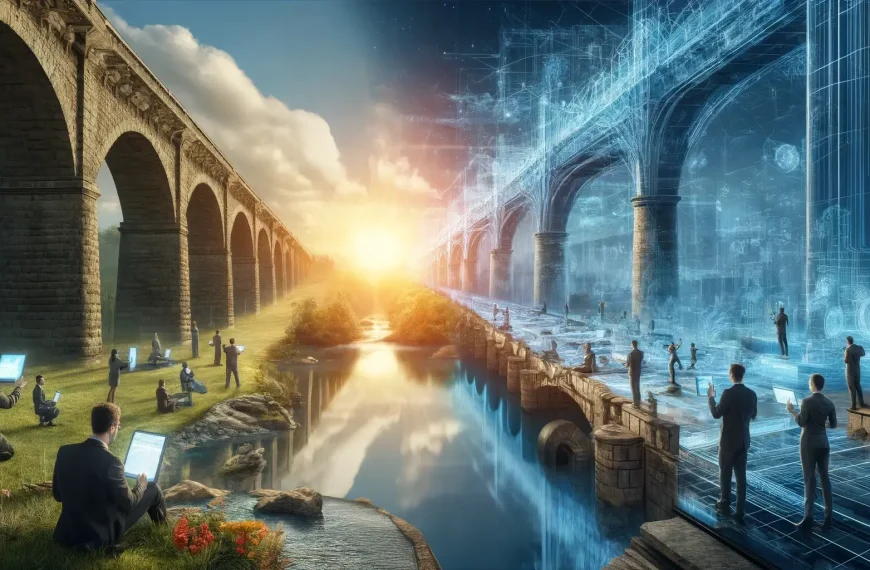Digitization and its changes – the scary thing or (and) the opportunity?
The world is always changing. This statement – although trivial – is a purpose of digital twinning research. There is more: the world is always changing at an increasing pace. We are validating this especially in the last decade with the omnipresent digital transformation.
Changes divide people into enthusiasts and pessimists. Not only for moral and cultural concepts but also for technical innovations. During the Industrial Revolution, people perceived the coming automation differently: some were excited about more comfortable lives; others were afraid of losing jobs and struggling in the new reality. As we know today, the groups that took the opportunities of technical advances changed and shaped our world.
The ongoing digitization comes with many shifts: reality is being virtualized into a parallel world; people are constantly connected to the web, producing thoroughly analyzed data; artificial intelligence is taking over tasks formerly reserved for humans. These changes bring excitement and fear – both feelings are justified. However – following the maxim “you must develop not to stay behind” – people and industries, whether enthusiasts or pessimists, should be prepared for the new.
Can’t the old good civil engineering be left alone?
When juxtaposing core civil engineering terms, let’s say “bridges”, with “artificial intelligence” or “virtual reality”, the old good bridges seem to be a technological relict of ancient times. After all, we are talking about static, monumental structures that, once built, can be left alone to stand for decades. But is it so? Not exactly.
Bridges, as well as other structures, are constantly reacting to varying environmental conditions and forces. The resulting gradual degradation of their condition can be unnoticed by users but is essential for engineers, managers, and inspectors. Because of that, structures must be monitored and maintained. Also, with new materials, design solutions, building techniques, and complex equipment, structures are still an area of innovation.
Nonetheless, the world is not slowing down. New challenges are ahead: sustainable and economic goals, growing population, and user requirements. These demands push structures to take the next steps into technical advances.
Creating the rules or staying behind?
To thrive, one must adapt to changes – especially in technological contexts. But adapting doesn’t have to mean a passive and mindless following. It can also mean shaping. Creating the rules of the game, so it is more “ours”.
In the digital world, industries become interconnected, which requires new principles and paradigms of cooperation. Digital twins are becoming this multi-industrial paradigm. Digital twinning is already being applied, but its principles are still forming. So we can still join the principles-forming process.
The principles of civil engineering digital twins should be formed not only by IT industry giants but also by the civil engineering community. It may seem obvious. But given the multitude and burden of our everyday tasks – CAD drawings to make, reports to craft, inspections to perform – it is hard to think about how our industry will look like 10, 5, or 3 years from now. But the time for this discussion it is now.
Digital twins (or some other form of thorough digitization) will be here with us. So – as civil engineers, architects, facility managers, AECO company owners – we can either discuss and declare our needs and requirements now, or wait for solutions created by others, not suited to our industry. Now is the time to influence how our everyday job will look like. Will “our” digital twins help us or their usage will be yet another burden? Will the new tools fill our needs perfectly, making our job much more satisfying, or will we need to struggle and “hack” the tools to make them usable for our tasks?
I see it as a motivation to discuss digital twins and other modern opportunities (like AI) in our AECO community, now.
